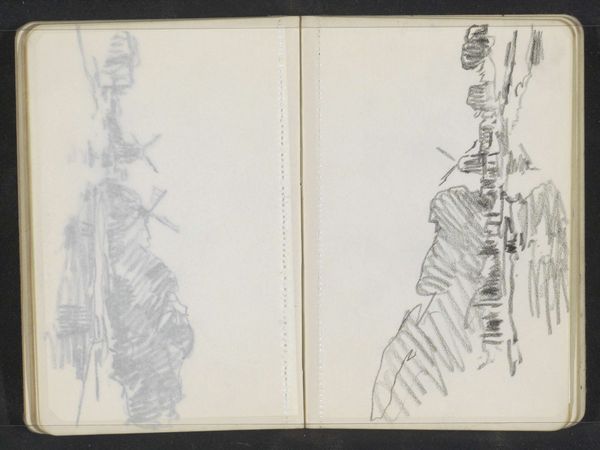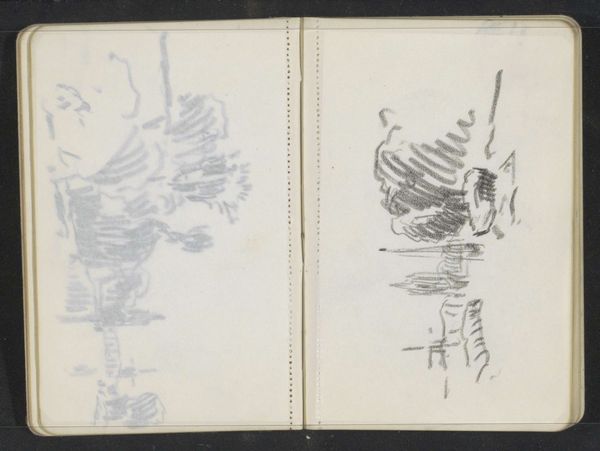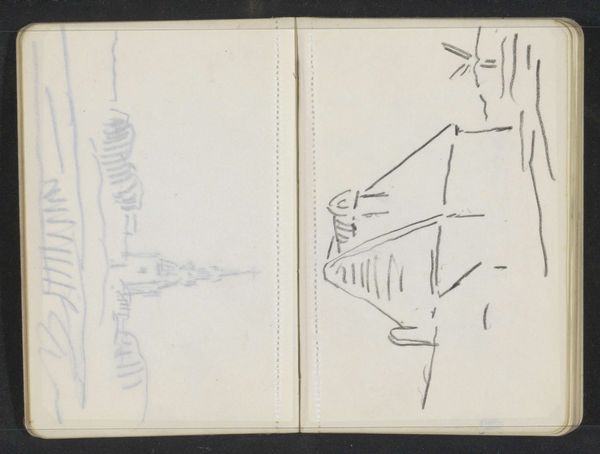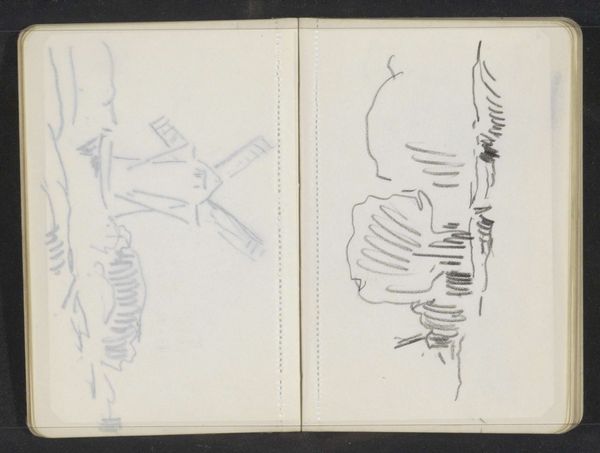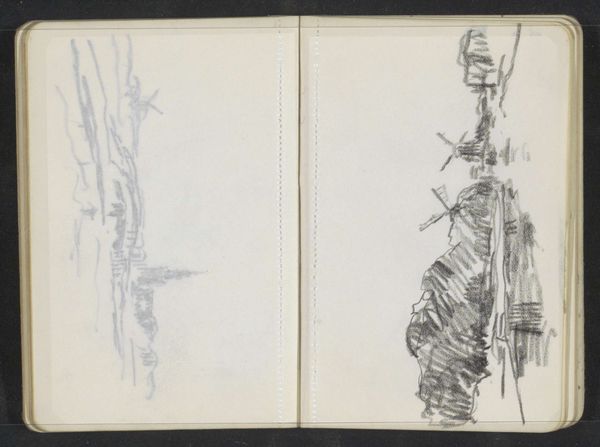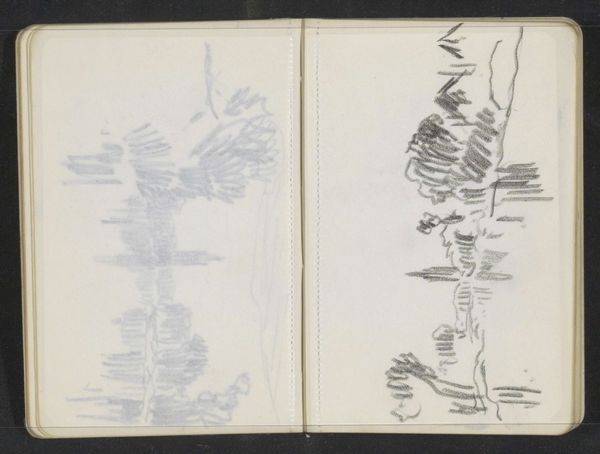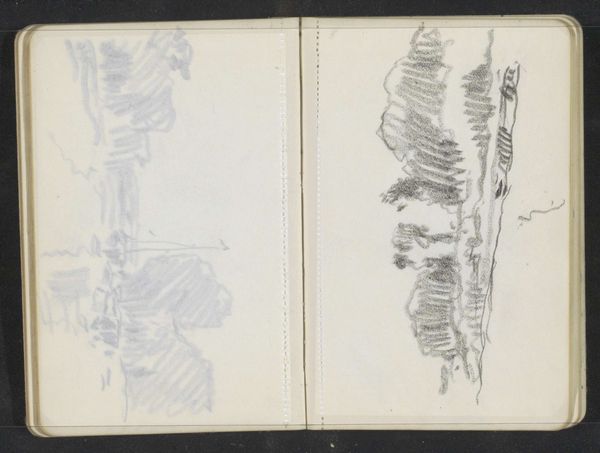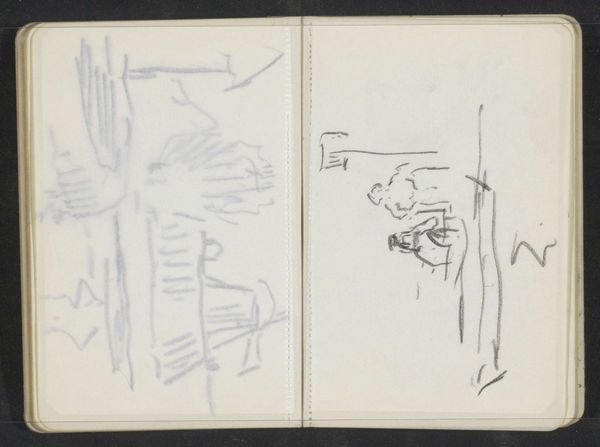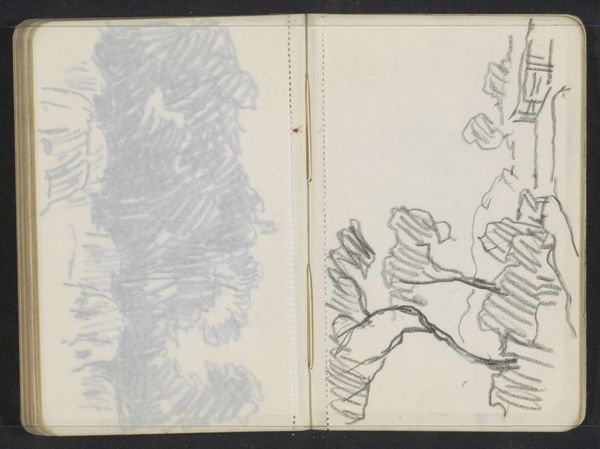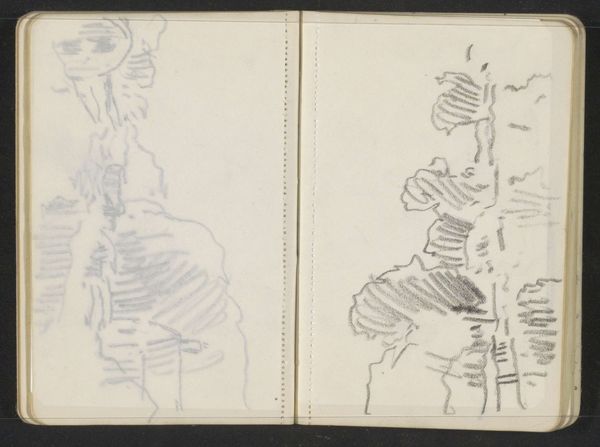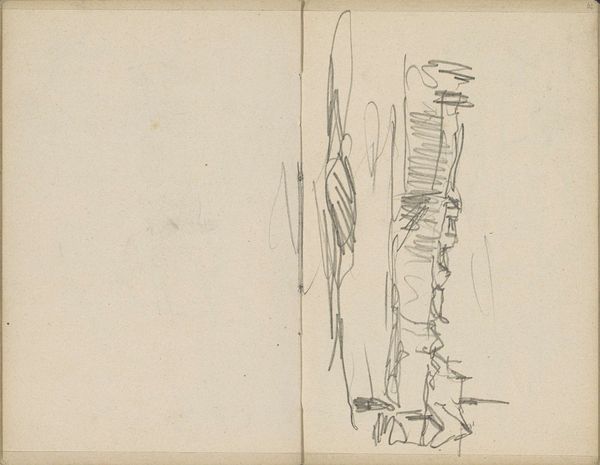
Copyright: Rijks Museum: Open Domain
Curator: Looking at this sketchbook page, what jumps out at you? Editor: Well, immediately I’m struck by the directness, the stark simplicity. It feels like a raw, unedited glimpse into the artist's thought process. The hasty, somewhat crude quality evokes the sense of observation as a tactile act. Curator: Exactly! This is Alexander Shilling’s "Figuur in een landschap," dating from around 1909. We believe it’s a study done in either pen, ink, or perhaps pencil. Sketchbooks, of course, give us great insight into an artist’s daily life and working methods, the tools of production and habits they keep close. Editor: And here, the very support speaks volumes. We are seeing a page, complete with the spine and presumably the traces and ghosts from preceding drawings, each telling a story through the medium. What context can you give me? Curator: Shilling was working during a fascinating period, with new artist collectives forming regularly. Museums and galleries at that time became very active in commissioning works, too. This personal glimpse into landscape painting is significant because we can explore what a painter chose to present in their public-facing fine art and compare those more "official" artworks with the ideas they may have recorded in this book, away from any potential public gaze. Editor: I'm intrigued by the two distinct compositions, the trees against what appears to be a pier with a figure – what separates the two or connects them in your view? Curator: It emphasizes the artist's mobility and interests – maybe he wanted to observe one site, but record two in one sitting. The artist may also wish to note the connection of materials and consumption in his life - this specific sketchbook must have been inexpensive to produce, allowing Shilling to acquire such a portable and casual object for artistic practices. Editor: That makes me wonder about the figure and the implied narrative element, who were they, and what impact could this landscape or location have on this person? Curator: We’ll never know the complete answer, but thinking about how spaces shaped human encounters during this period definitely opens a rich vein for speculation. Editor: It has given me a completely different perspective. Curator: Me too. Thank you!
Comments
No comments
Be the first to comment and join the conversation on the ultimate creative platform.
